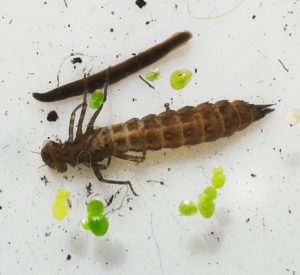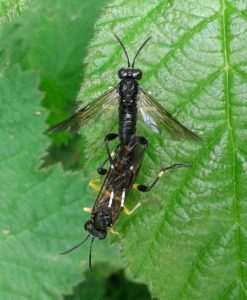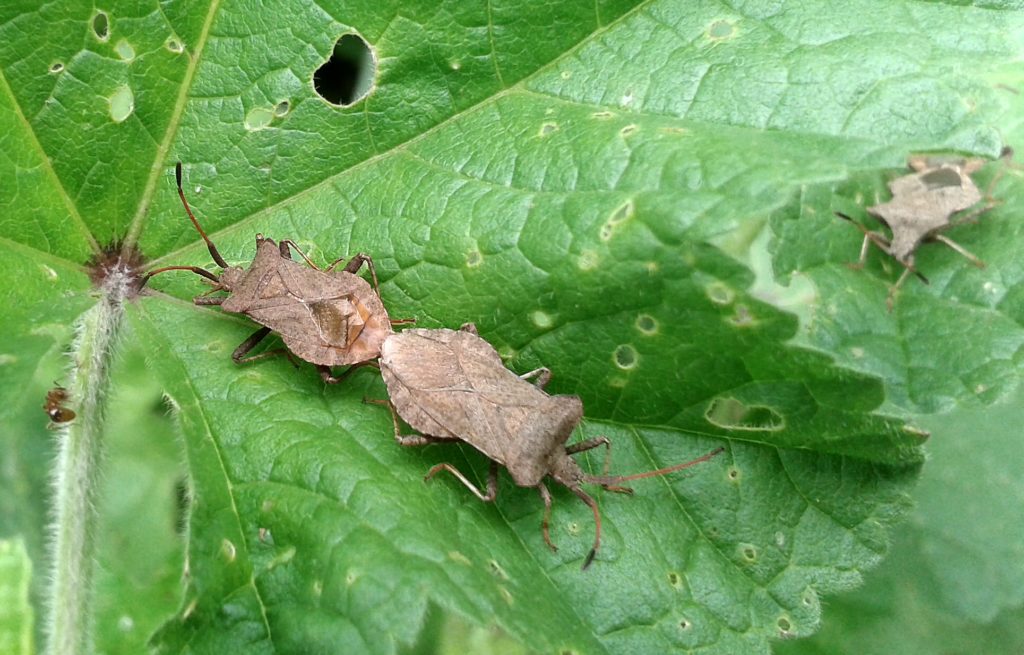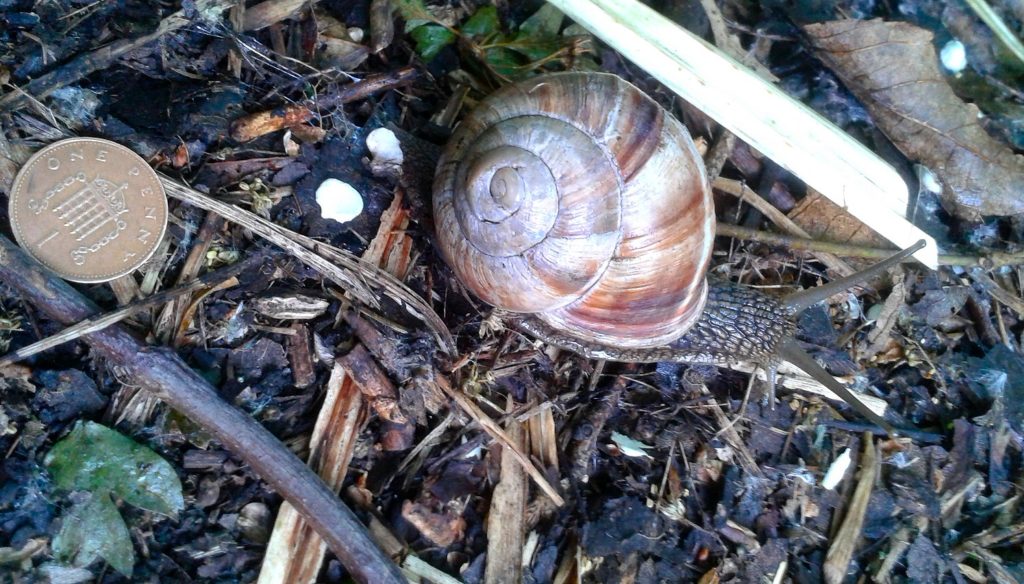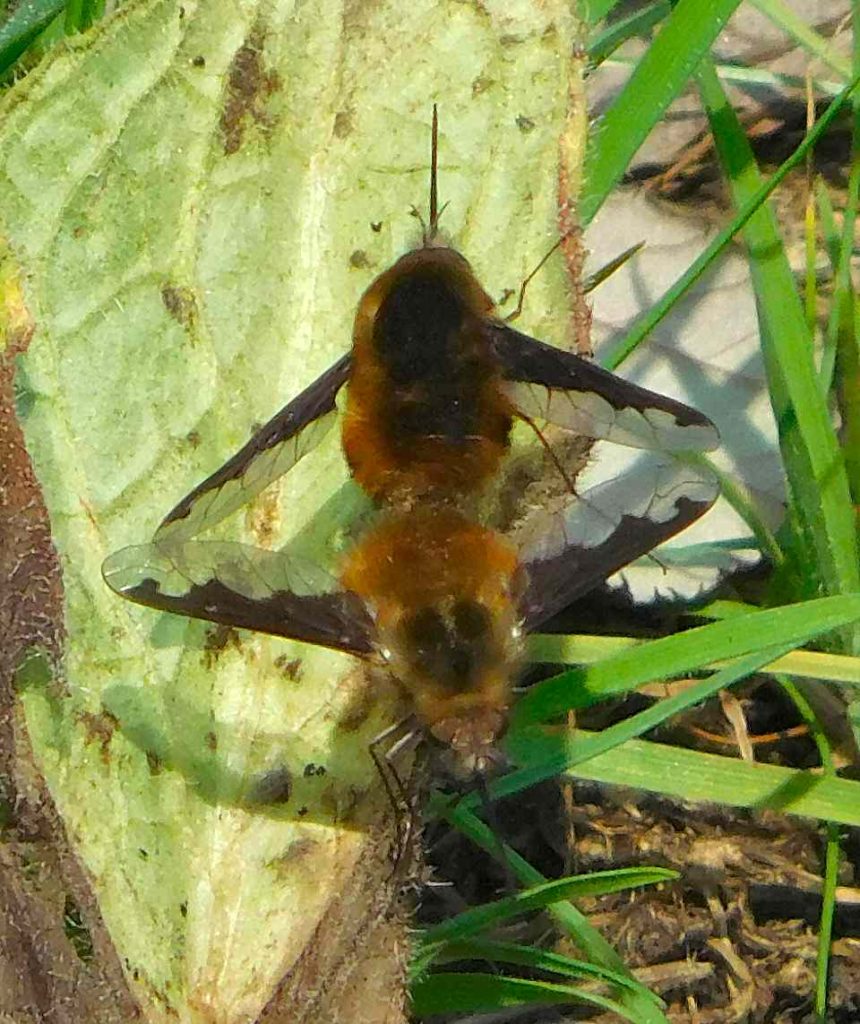
Several “firsts of the year” today: a Blackcap sang in the reserve; the first Speckled Wood butterfly, closely followed by a pair of males fighting in a clearing; the first Comma on the Picnic Meadow; and these splendid Bee-Flies with their handsomely pictured wings, demonstrating that they may be short, round, and furry, but they can fly while coupled tail-to-tail, not as elegantly as a wheel of Dragonflies maybe, but unquestionably able to get airborne, one of the two flying (of course) backwards.
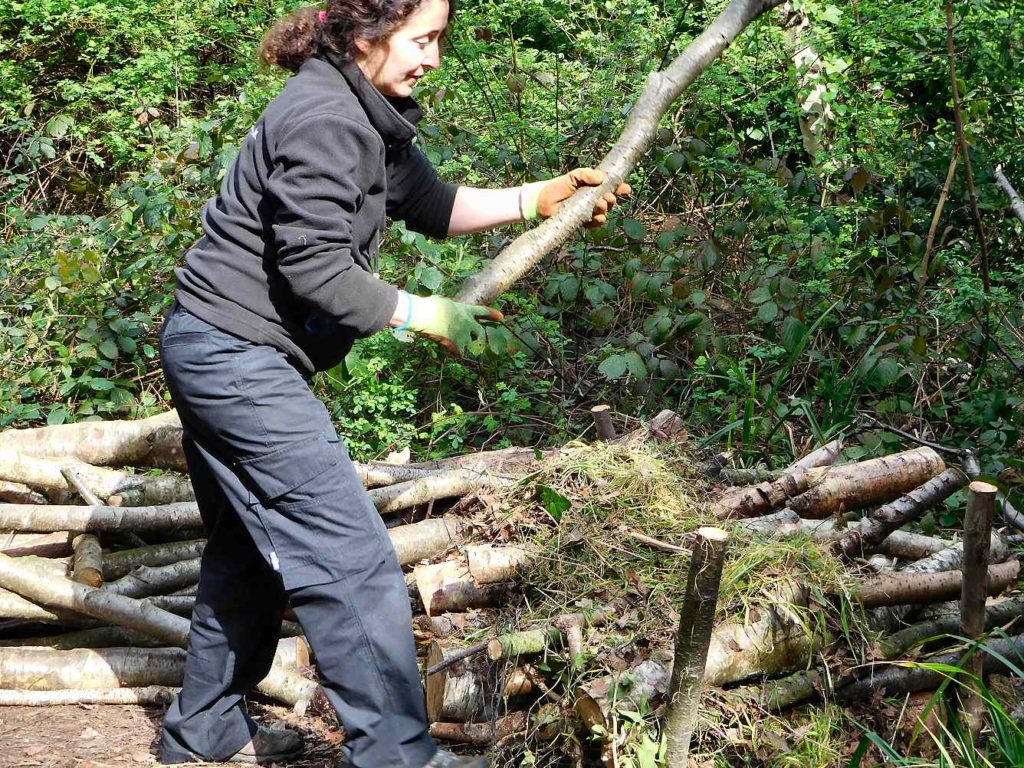
After building a habitat woodpile, we spent the day scything the meadow and raking up the clippings to deplete the mineral status little by little. It seems to be working nicely, as the range of insects and flowers is plainly increasing. Netty found some Vetch and Mouse-Ear; and there are attractive Red-Tailed Bumblebees to join the Buff-Tails and White-Tails that are emerging from their winter lairs.
The air was full of birdsong from Chiffchaffs, Blackbirds, Great Tits, Blue Tits, Goldfinches, Robins, Dunnocks and the newly-arrived Blackcap. A Sparrowhawk circled overhead. The cherries are all in flower. Spring has sprung.

